Info
Subfamily: Panicoideae
Genus etymology: Bothriochloa = "pitted grass" [Greek] refering to the pits on the lower glume in most species
Species etymology: barbinodis = "beard knot" [Latin] refering to nodes with hairs, although many members of this genus share this character
Photosynthetic type: C4 (warm season)
Nativity: naturalized - intentional
First recorded in Hawaiʻi: 1905
Map
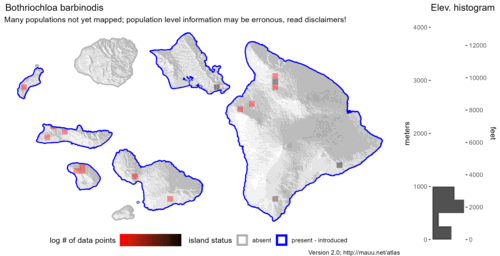
Inflorescence
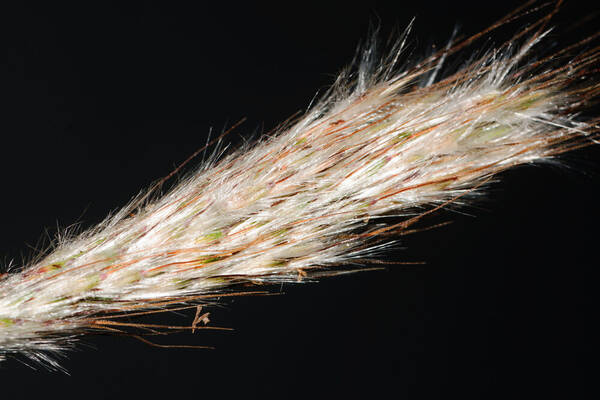
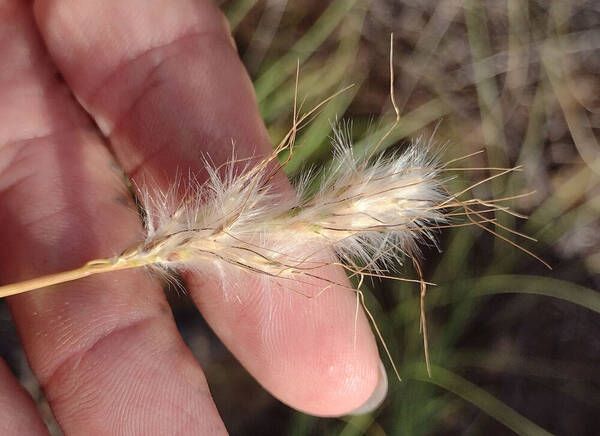
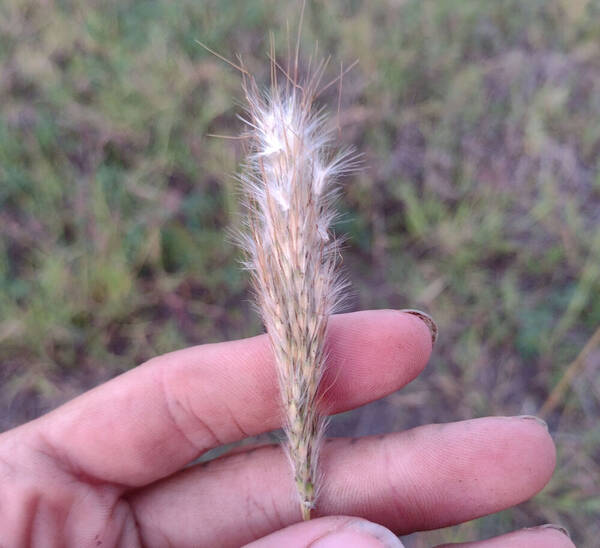
Habit
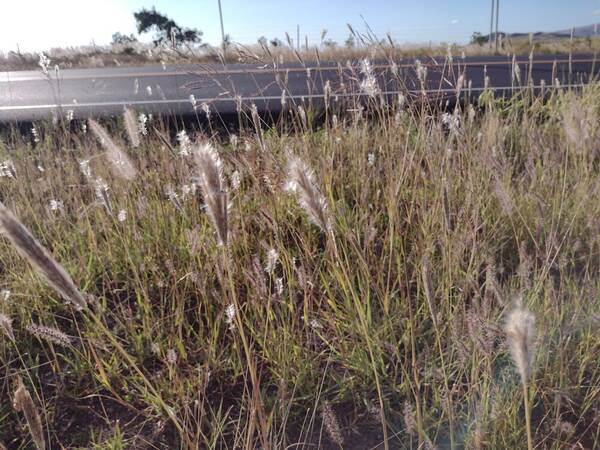
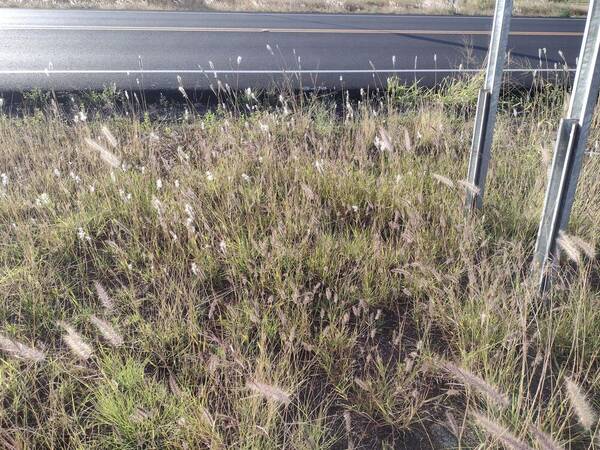
Spikelets
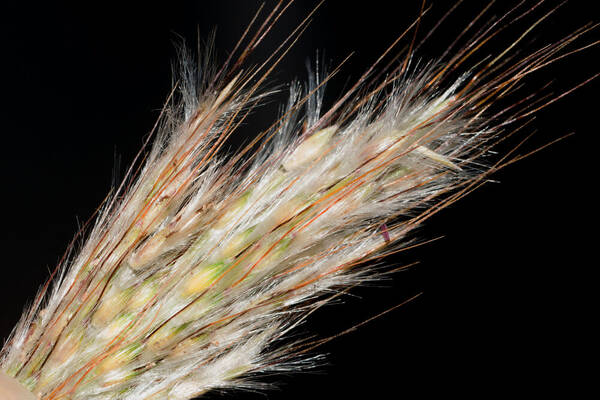
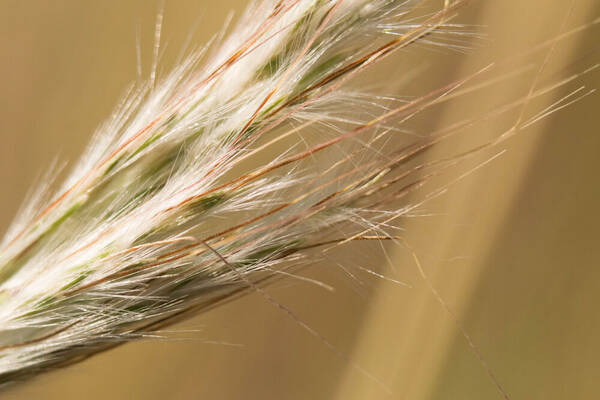
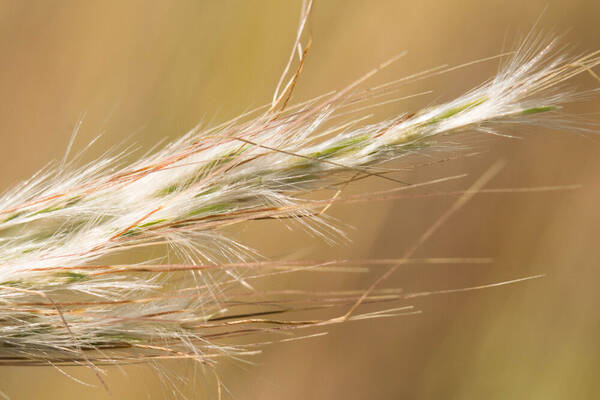
Description
Culms 60-120 cm tall, rarely more than 2 mm thick, erect, geniculate at the base, often branched at maturity, not glaucous below the nodes; nodes hirsute, hairs 3-4 mm, mostly erect to ascending, tan or off-white. Leaves cauline; ligules 1-2 mm, often erose; blades 20-30 cm long, 2-7 mm wide, not glaucous, glabrous or sparingly pilose near the throat. Panicles 5-14(20) cm on the larger shoots, oblong to somewhat fan-shaped, silvery-white; rachises 5-10 cm, straight, exserted or partially included in the sheath, with numerous branches; branches 4-9 cm, erect, with several rames; rame internodes with a membranous groove wider than the margins, margins densely pilose, longest hairs 3-7 mm, concentrated distally. Sessile spikelets 4.5-7.3 mm; lower glumes short pilose, with or without a dorsal pit; awns 20-35 mm; anthers 0.5-1 mm, often remaining within the spikelet. Pedicellate spikelets 3-4 mm, narrowly lanceolate, sterile. 2n = 180.
(Description source: Barkworth, M.E., Capels, K.M., Long, S. & Piep, M.B. (eds.) 2003. Flora of North America, north of Mexico. Volume 25. Magnoliophyta: Commelinidae (in part): Poaceae, Part 2. Oxford University Press, New York. 783 pp http://floranorthamerica.org/Bothriochloa_barbinodis )
Tufted perennials; culms spreading to ascending, 5-10(-15) dm tall, sometimes geniculate and often branched at base, nodes densely villous. Sheaths 8-12 cm long, glabrous, sometimes sparsely longhispid at throat; ligule membranous, 1- 2.5(-3) mm long, erose to lacerate; blades flat, 12-25 cm long, (2-)3-6 mm wide, midrib prominent, scaberulous, sometimes glaucous, long-pilose at base. Inflorescences silvery white, dense, paniculate, oblong or flabellate, (4-)5-10(-16) cm long, composed of numerous short-pedunculate racemes on an axis 2-6 cm long, pedicel of pedicellate spikelet 3-4 mm long, flat, margins thickened, rachis joints and pedicels long-villous, the hairs (3.5-)6-9 mm long; pedicellate spikelet reduced to a single, narrow, subcoriaceous, hirtellous glume 4.5-5 mm long, often deciduous; sessile spikelet lanceolate, (4-)5-6 mm long; glumes of sessile spikelet subequal, first glume 7-11-nerved, flat on dorsal surface, villous in lower part, scabrous in upper part, apex acuminate to narrowly truncate, second glume somewhat keeled, 3-nerved, glabrous, glossy; sterile lemma ca. 3/4 as long as glumes, glabrous, membranous, apex obtuse, fertile lemma linear, ca. 4 mm long, membranous, bearing a geniculate awn 20-30 mm long, the awn twisted at base; palea vestigial. Caryopsis dark brown, ovoid to ellipsoid, 2.5-3 mm long. [2n = 120, 180.]
(Description source: O’Connor, P.J. 1990. Poaceae, pp. 1481–1604. In: Wagner W.L., Herbst D.R. & Sohmer S.H. (eds.)., Manual of the flowering plant of Hawaiʻi. Vol. 2. University of Hawaii Press & Bishop Museum Press, Honolulu )